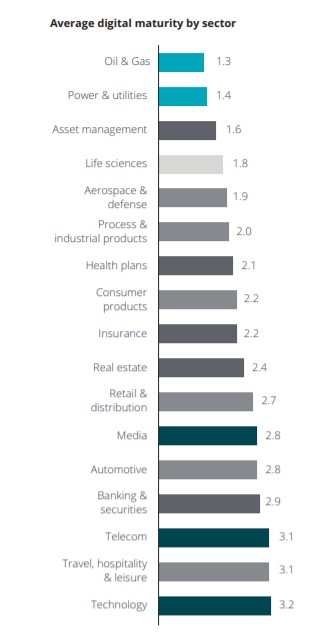
A lot of change is going on in the oil and gas industry. As a result, QA/QC (Quality Assurance and Quality Control) Inspectors in oil and gas are being forced to reevaluate their role and their skills for success in this new digital age.
This blog post will discuss these changes and how quality control managers in oil and gas can stay relevant by adapting to the digital future.
What Is Project QA/QC in the Digital Age?
Digitization means different things to different people, so understanding what your company aims to achieve with its QA/QC inspection strategies can be challenging when starting out on a digital journey.
In many cases, organizations have already moved beyond just needing to go paperless. QA/QC Inspectors in oil and gas are looking to streamline QA/QC inspection processes, find ways to do more with less (fewer resources), improve quality management, and automate QA/QC inspections where possible. The process is much simpler now. Quality control workers record the results of their reports in an all in one platform that is much more accessible.
While there is no one-size-fits-all approach for digitizing QA/QC, at the end of the day, it's all about re-engineering how QA/QC works. For some companies, that means going paperless – but this will just be the start for most. Indeed, many companies find going paperless quickly evolves into an opportunity to rethink business processes involving QA/QC documentation altogether.
What Is Paperless QA/QC?
Going paperless focuses on the efficiency of inspections. Most quality control Inspectors in oil and gas are now using input screens on mobile devices to replace paper checklists. This can include form fillers, online spreadsheets, or any other type of replacement tool that reduces the time spent organizing QA/QC inspection reports before submitting them for review by management.
This approach is often helpful when dealing with documentation workflows where a quality control inspector needs to generate multiple QA/QC inspection forms on a daily basis. It can save a lot of entry time and administration once data has been submitted online.
Because going paperless focuses on the efficiency of inspections, less time is spent managing QA/QC reports – allowing for more time to do actual QA work. Some firms choose to automate the process with advanced vision inspection systems they install at some points in the production process. That has its benefits too. However, going paperless also has the potential to reduce QA/QC inspection errors by eliminating transcription or handwriting mistakes on QA/QC forms by quality control workers after they've been completed.
Also, the administration is more manageable. Inspection results are already in a format that you can send or save to corporate cloud storage. The shift is simple, and checklists may even be identical.
The transition to paperless is more than justifiable when you consider the savings in both time and money. The only caveat is the need to manage the disruption carefully, though this does not negate the benefits that can be realized. Many quality control inspectors work with traditional systems and have been doing so for a long time. So, the transition might be overwhelming but for the best.
What Is Digital Re-engineering of QA/QC?
The oil and gas industry hasn't fully embraced digital despite the benefits of digital transformation. For example, a recent Deloitte study saw the oil and gas industry score the lowest in digital maturity.

(Image source: Deloitte)
Digital re-engineering of QA/QC takes QA/QC inspection workflows to the next level. Quality control workers have used and some still use hand-held measuring devices, such as callipers and alignment gauges. They more commonly operated electronic inspection equipment for it.
Now, however, they focus on deploying advanced analytics, lean principles, mobile devices for data capture on-site, and cloud-based collaboration tools that enable QAs to create new value that wasn't possible without the use of new technologies.
Some of the new tools that inspectors can use to re-engineer QA/QC workflows include:
- Inspection checklists that adjust dynamically to observations made during inspections
- Elimination of manual emails by using automated communications based on triggers
- Exception-based quality management using data dashboards
- Data-driven lessons learned for continuous process improvement
With an understanding of the new tools and what is possible, a QA/QC inspector in oil and gas can propose re-engineered workflows and digital technologies to make it possible.
Re-engineering examines the overall picture and welcomes status quo disruption. But, unlike going paperless without a clear cost-benefit, it aims to reduce costs while also creating strategic value-added changes to improve how things are done.
Which Path Is Best, Paperless or Digital Re-engineering?
Actually, you need to do both.
You can't do digital re-engineering all at once, but simply going paperless is an insufficient goal because it doesn't solve everything. Instead, digital re-engineering is a process that lays a foundation that gets built upon over time – typically one year.
First, plan out what a digital QA/QC inspection system looks like for your company and extract elements related to doing paperless inspections. Then, implement them as the first step in your QA/QC workflow change management program.
Some quick wins include adding features that simplify the field inspection process, such as dynamically adding images and identifying flaws on failed checkpoints.
Automate "free" workflows that are a by-product of data-driven inspections. Continue to automate the communication of deficiencies. Then, move on to establishing cohorts of re-engineered procedures in phases. For example, focus on tools for the quality manager, followed by managing vendor quality performance, construction process improvement, and so on.
FTQ360 Software
Companies use FTQ360 quality assurance software for world-class digital transformations.
FTQ360 supports paperless and is more straightforward to use than web-screen form fillers, reducing administration time while increasing QAs' focus on their primary job – quality control and assurance. In addition, FTQ360 has a robust features toolbox, which opens up re-engineering opportunities using tools like mobile data capture apps with GPS location mapping, automated reports based on triggers when specific observations are made, exception-based quality management through real-time dashboards, and reporting failures or exceptions noted in your report checklist forms.
The software also eliminates manual emails by using automated communications such as automatic notifications and online visibility of open issues.
Check out our free trial offer to discover features created specifically for oil and gas inspections and how your QA/QC oil and gas inspection professionals can make re-engineering workflows a reality and better your current quality system.
